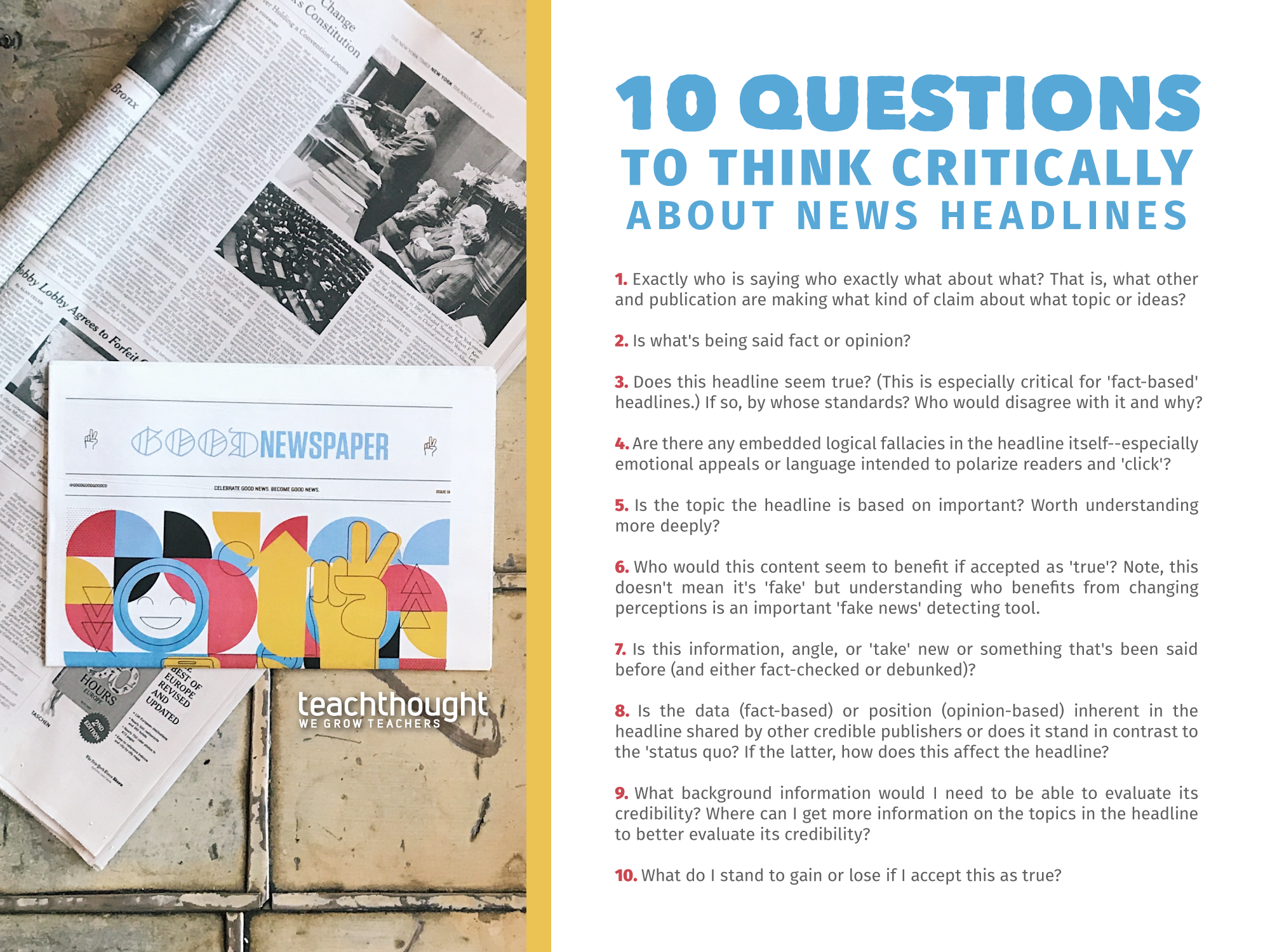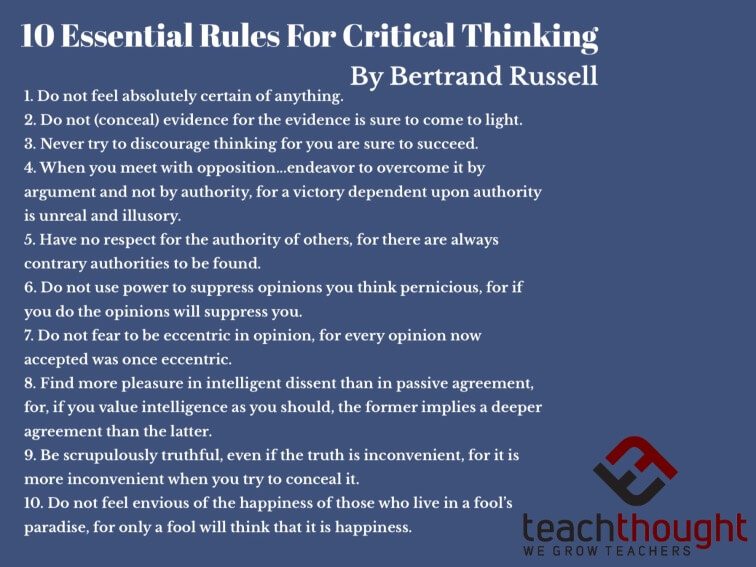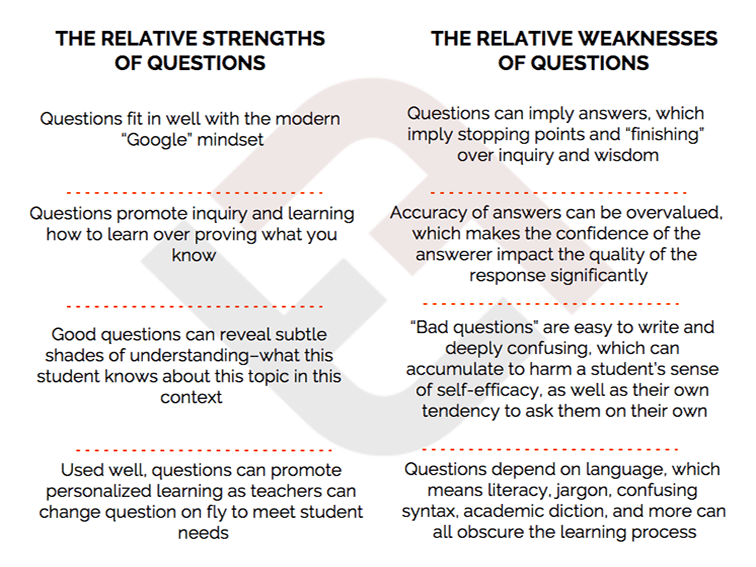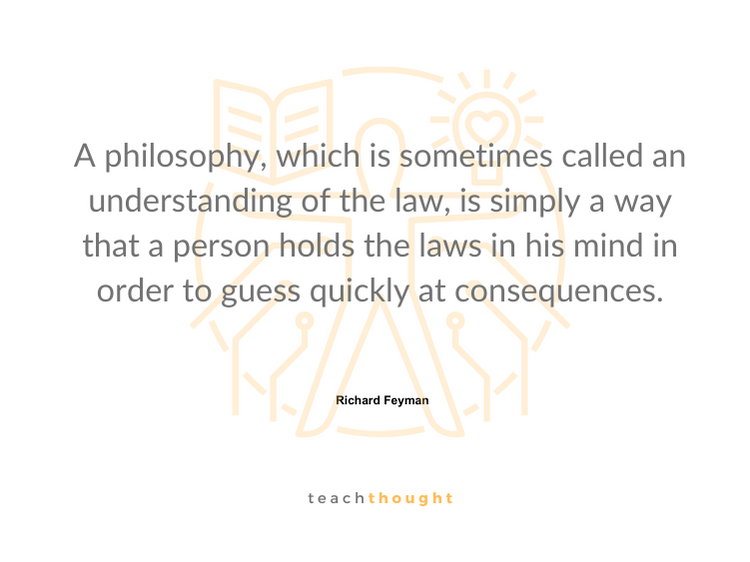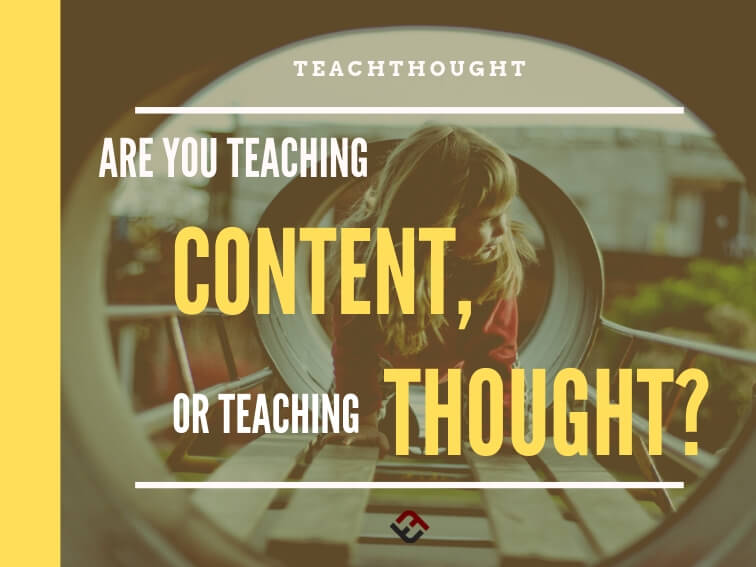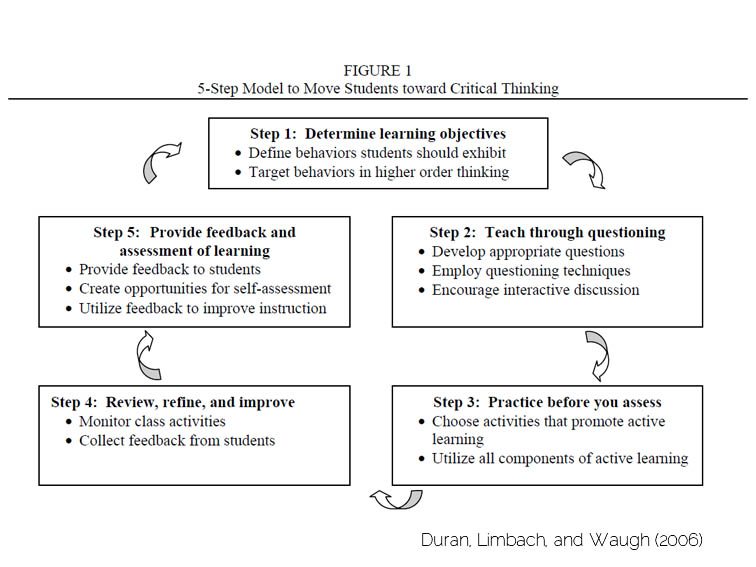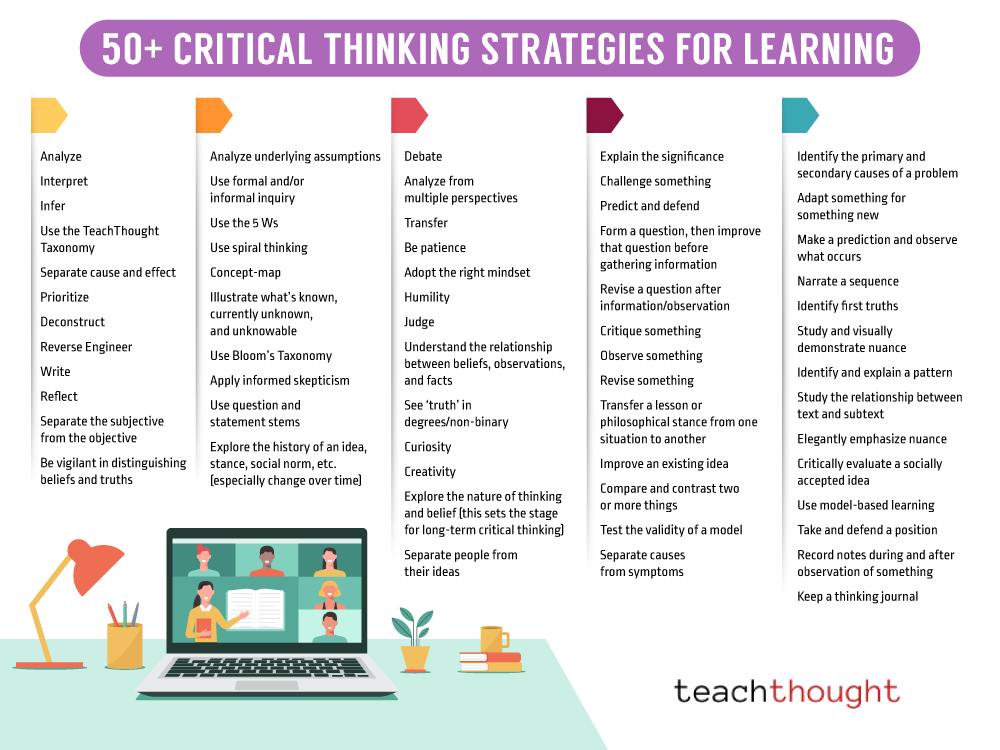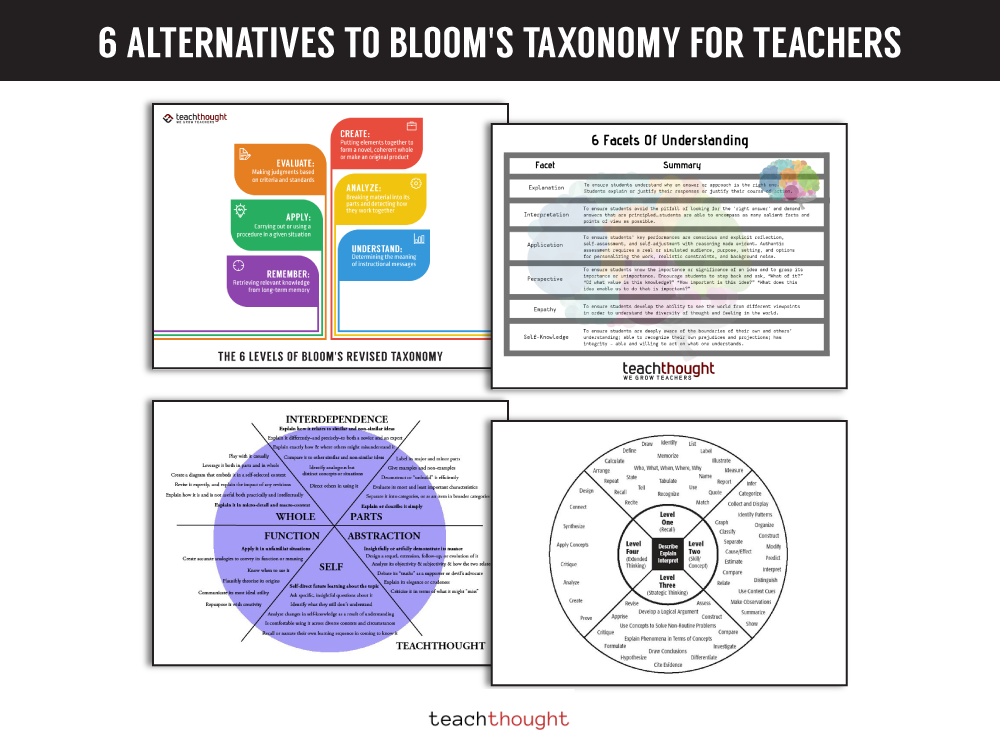Critical Thinking Posts
20 Questions To Help Students Think Critically About News
Misleading info is often based on partial truths & reframed to fit a purpose. Here are questions to help students think critically about news.
50 Of The Most Inspirational Quotes About Life
“Every act of perception is to some degree an act of creation, and every act of memory is to some degree…
Bertrand Russell’s 10 Essential Rules Of Critical Thinking
Bertrand Russell’s essential rules of critical thinking: #1. Do not feel absolutely certain of anything.
126 Digital Learning Verbs Based on Bloom’s Taxonomy
Global Digital Citizen Foundation combines both Bloom’s Taxonomy and power verbs for lesson & assessment planning in this graphic.
An Updated Guide To Questioning In The Classroom
This guide to questioning in the classroom views questions as signs of understanding, not ignorance–the ability to see what you’re missing.
Richard Feynman On Knowing Versus Understanding
“A philosophy…sometimes called an understanding of the law…is a way that a person holds the laws…to guess quickly at consequences.”
Are You Teaching Content Or Teaching Thought?
If our curriculum is thinking, if our job is (excuse the convenient phrasing) teaching thought, our goals as educators change.
A Model For Teaching Critical Thinking
Like anything else in your classroom, promoting critical thinking skills is a matter of planning, priority, and practice.
